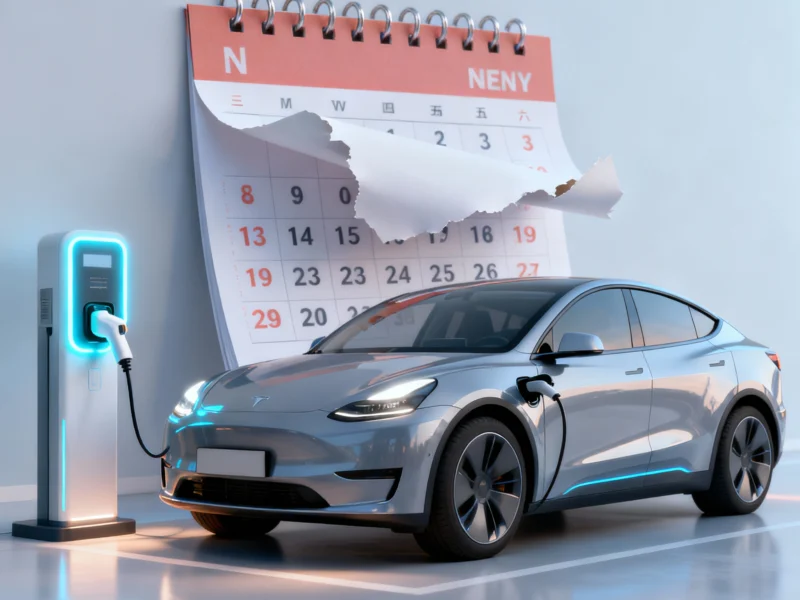In a significant strategic pivot, General Motors has announced it will cease development of hydrogen fuel cells for consumer vehicles, marking a major shift in the automotive industry’s alternative energy landscape. The company’s Friday bulletin confirmed the end of its HYDROTEC brand’s work on hydrogen fuel cell technology for passenger vehicles, instead redirecting research and development resources toward battery systems, charging infrastructure, and electric vehicle platforms. This decision reflects broader industry trends as automakers confront the practical challenges of hydrogen adoption.
Strategic Shift in Automotive Energy Development
GM’s move represents a calculated reallocation of technological resources amid evolving market realities. The company emphasized that while it’s ending consumer-focused hydrogen development, it will maintain its Fuel Cell System Manufacturing joint venture with Honda, which produces cells for industrial applications including data centers and power generation systems. This balanced approach allows GM to maintain expertise in fuel cell technology while concentrating consumer vehicle efforts on more immediately viable electric solutions.
The announcement cited two primary factors driving the decision: limited hydrogen infrastructure and prohibitive costs that have prevented fuel cell technology from gaining meaningful traction in consumer markets. These challenges have persisted despite decades of development and substantial investment from multiple automakers, according to industry experts who have tracked alternative energy adoption patterns.
Industry-Wide Hydrogen Reassessment
GM’s strategic realignment follows a similar February announcement from Toyota, which also shifted its hydrogen projects toward industrial applications rather than consumer vehicles. This converging industry perspective suggests a broader reassessment of hydrogen’s role in personal transportation, with multiple manufacturers now prioritizing electric battery technologies for consumer markets.
The automotive industry’s collective pivot reflects practical considerations about infrastructure scalability and consumer adoption patterns. While hydrogen offers theoretical advantages for certain applications, the widespread deployment of charging networks for battery electric vehicles has created a more immediately accessible pathway for zero-emission transportation, according to recent analysis of energy investment trends.
- Infrastructure limitations for hydrogen refueling stations
- Higher vehicle costs compared to battery electric alternatives
- Industrial applications showing more immediate promise
- Battery technology advancements accelerating electric vehicle adoption
Investment Implications and Market Impact
This strategic shift has significant implications for investors and the broader alternative energy landscape. The redirection of R&D resources toward battery and charging technologies signals where major automakers see the most promising near-term returns, potentially influencing capital allocation across the transportation sector. Industry experts note that such moves by manufacturing leaders often presage broader market trends.
The decision also reflects evolving assessment of hydrogen’s role in the broader energy ecosystem. While consumer automotive applications face challenges, hydrogen continues to show promise for:
- Heavy-duty transportation and freight
- Industrial power generation
- Energy storage applications
- Specific commercial vehicle segments
Future of Alternative Vehicle Technologies
GM’s announcement doesn’t completely eliminate hydrogen from its long-term planning but rather refocuses its application toward areas with clearer paths to commercialization. The maintained joint venture with Honda demonstrates continued belief in fuel cell technology’s potential, just not for mass-market consumer vehicles in the immediate future.
This recalibration comes amid rapid advancements in battery energy density, charging speeds, and cost reductions that have improved the competitive position of electric vehicles. The converging trends of battery improvement and hydrogen infrastructure challenges have created a clear prioritization for most major automakers, with additional coverage available through related analysis of energy investment strategies.
As the automotive industry continues its transition away from internal combustion engines, GM’s decision represents a pragmatic assessment of which technologies can scale most effectively to meet consumer needs and environmental goals simultaneously. The focus now shifts to how quickly battery and charging technologies can evolve to fully replace traditional powertrains across all vehicle segments.



